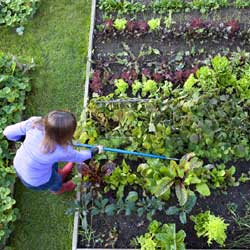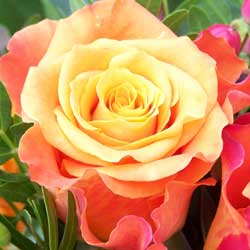Turn over your vegetable garden and add humus, mushroom compost or manure to enrich the soil.
Fertilize perennials!
Continue spring cleanup. Completely remove winter mulch. Cultivate to remove winter weeds and debris from the planting beds, then edge. Prepare your annual beds, and mulch landscape beds with shredded mulch, bark chips, or gravel.
Plant and transplant trees and shrubs, including roses, ground covers, and perennials.
Seed or sod new lawns. Reseed bare spots in established lawns. Keep the area moist until seedlings appear, then mow when the new grass is 3” high.
Transplant cool-season seedlings into the garden. When the soil temperature reaches 60 degrees, sow warm- and cool-season vegetable and herb seeds.
Dig and divide crowded spring bulbs after they have finished blooming. Enrich the soil with compost, manure or Espoma Bulb-Tone.
Prune forsythia and other spring-flowering trees and shrubs after the flowers fall.
Place gro-thru sets and link stakes over or around peonies, grasses, or any other perennials in need of support.
Begin summer rose care program of deadheading, fertilizing, and watering.
Deadhead bulbs, but leave foliage to mature and yellow before removing. This will help nourish the bulb for next year’s flowering.
Dig and divide early blooming perennials after flowering.
Fertilize container plants and window boxes through the spring and summer.
Pay close attention to the watering needs of these plants as well as hanging baskets, because they tend to dry out quickly on hot summer days.









